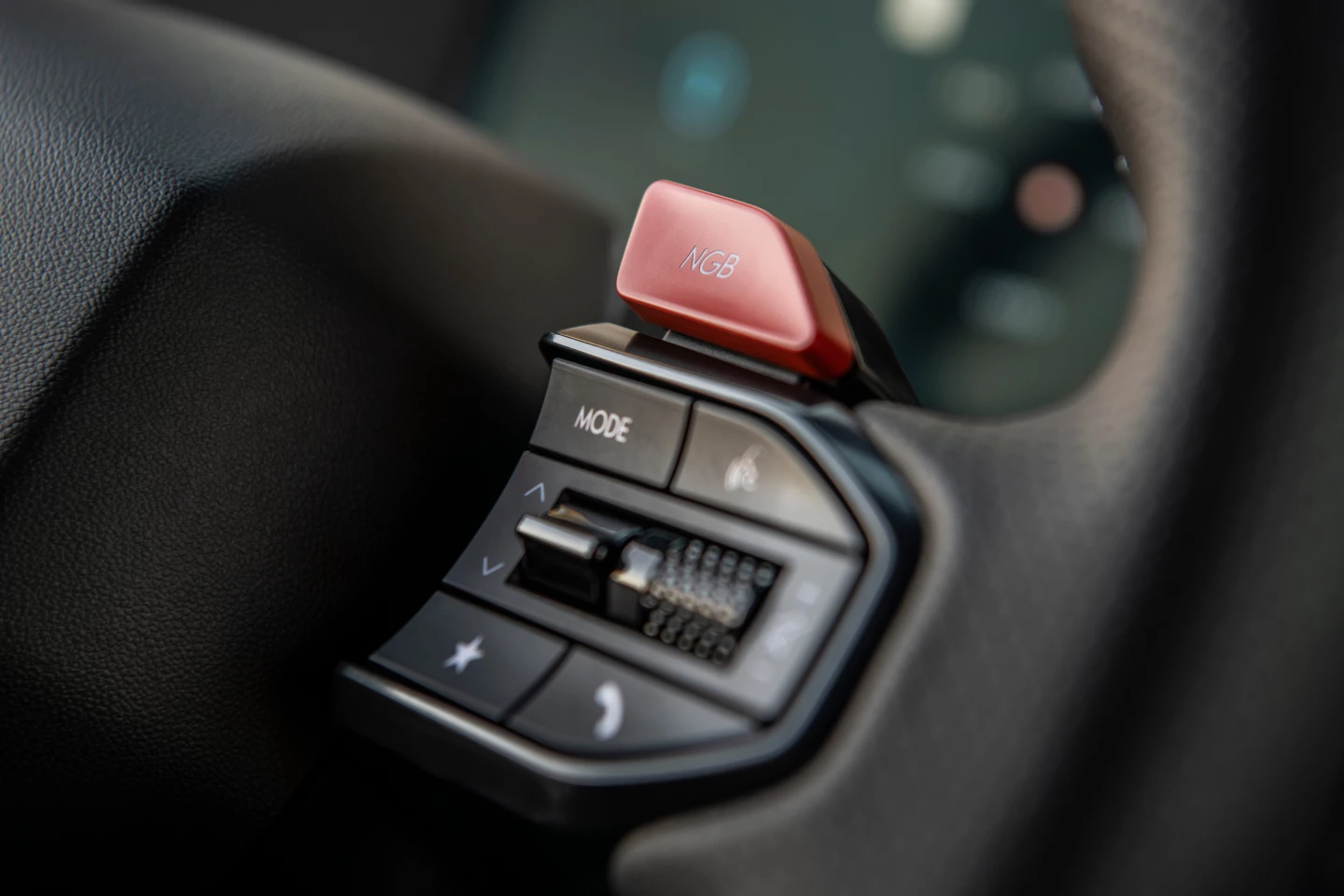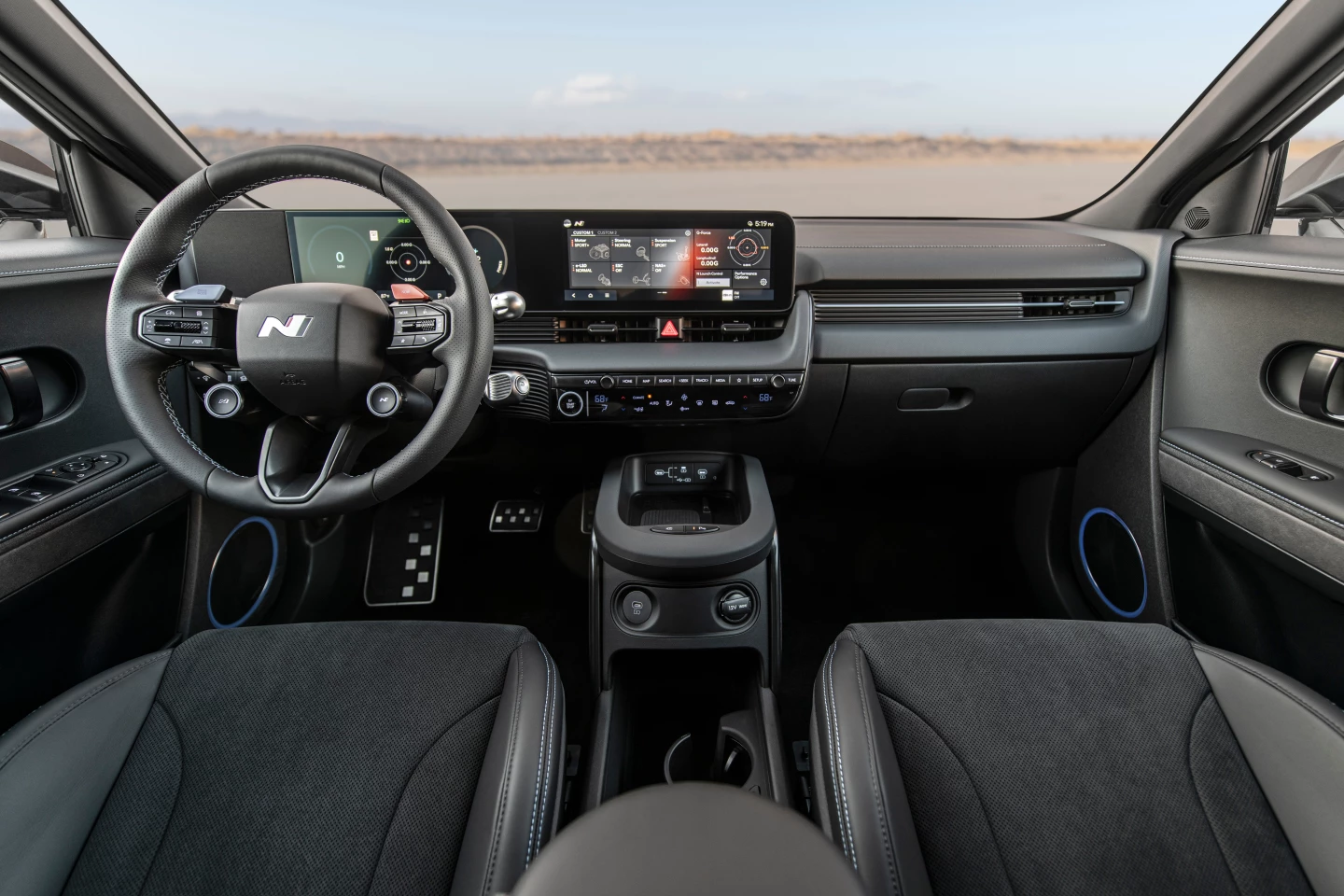Hyundai has unveiled its first N branded electric performance vehicle. Unveiled as a precursor to the AutoMobility LA show (aka the LA Auto Show), the Ioniq 5 N features 641 hp (478 kW) of output potential with a two-stage inverter and 84-kWh battery.
Hyundai says the car's performance features work to enhance spirited driving, with battery preconditioning, brake regeneration, drift optimization, torque distribution, and track-ready settings. More N-branded performance electrics will be coming after the Ioniq 5 N.
"Ioniq 5 N was developed to take driving fun to a new level by utilizing the latest technologies available," said Till Wartenberg, vice president and head of N Brand and Motorsport at Hyundai. "Starting with Ioniq 5 N, N brand aims to deliver its signature fun driving experience regardless of petrol, electric or hydrogen. To accomplish this, we've closely monitored the voices of our N fans in order to fine-tune our first all-electric N with the goal of electrifying the driving passion of our most demanding N-thusiasts."
The Ioniq 5 N adds stiffness with added welding points and adhesives to the Ioniq 5's body-in-white structure. Reinforcements for motor and battery mounting and enhancements to front and rear subframes add lateral rigidity, while integrated drive axles inspired by World Rally Championship designs are applied both front and rear to endure more torque from performance driving. Unsprung mass was reduced via 21-inch forged aluminum wheels.

Strengthening of the steering system improves turning rigidity thanks to a rack-mounted motor-driving power steering (R-MDPS) system with a quicker ratio versus the standard Ioniq 5.
Enhancements to handling and powertrain response were made to coincide with the instant torque of the electric propulsion via software. Similar to the i20 N WRC cars Hyundai's team races, the system improves torque vectoring and motor output and, when engaged, drops efficiency metrics in favor of performance. Allowing weight transfer to the front when cornering, instead of optimizing brake regeneration, is an example of that strategy change for the Ioniq 5 N.
Finally, for the drifters, the N Drift Optimizer helps maintain a desired drift angle by balancing vehicle controls via real-time inputs. A built-in torque kick function allows simulation of a clutch-kick that would be found on conventionally-powered rear-driven vehicles.
All of these performance changes are to accommodate improvements to the 2025 Ioniq 5 N's power upgrades. The electric motors (one per axle) on the car can spin up to 21,000 rpm to provide 641 hp when boost is engaged via the N Grin button. A new 84-kWh battery powers it all.
Other systems on the car allow the driver to track usage during performance. Track State of Charge, for example, shows calculations of battery consumption per lap and overall so that available power can be maximized. Thermal management systems keep the battery cells cool during spirited use and high output situations, while independent radiators for batteries and motors improve thermal efficiency.
This thermal management systems can be utilized by the driver to precondition the batteries before hitting the track. Endurance and Sprint modes optimize battery temps for longer racing or drag strip runs.

Stopping power comes from N-tuned brakes, the most powerful production braking system Hyundai has made to date. These rely on 15.75-in front rotors (14.2-in rear) and four-piston monobloc calipers. The regenerative braking system can be calibrated by the driver for aggressive or non-aggressive use and usually is the primary means of braking force. Regen braking can provide up to 0.6 g of deceleration before engaging physical calipers.
Finally, Hyundai added faux shifting and futuristic engine-like sounds to provide more engagement. Called N e-shift and N Active Sound, these simulate the power shift feel and rev matching of performance driving.
The 2025 Hyundai Ioniq 5 N with its Pirelli P Zero high performance tires and red accents will enter the market mid-year in 2024 as a 2025 model year vehicle.
Source: Hyundai
























